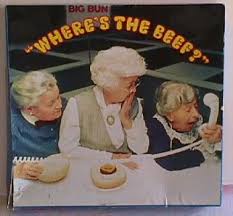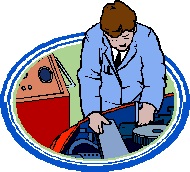 Here are some stats that Most of us already know and most Dealer Principles and GMs may already know. But let’s give it another read because this is important to your business.
Here are some stats that Most of us already know and most Dealer Principles and GMs may already know. But let’s give it another read because this is important to your business.
Not all buyers use the same criteria to choose a dealer or are influenced by the same dealer experience and sales processes.
According to the Foresight Research 2013 Dealership Report, Taken from UCN News, based on a study of 7,543 recent U.S. new car and truck buyers, experience with a brand drives most purchases.
While 17 different automotive marketing communication channels are analyzed in this study, none are more influential to the purchase decisions of new car and truck buyers than the dealership experience with the exception of prior brand experience. Forty-nine percent of all buyers this past year report that their dealership experience was highly influential to their decision to purchase the vehicle they did.Â
The average new-vehicle buyer today is older (nearly half are over age 55). They are also wealthier and experienced with the buying process. Dealer reputation and relationships are key to this group.
Younger buyers (many of them first-time buyers) bring a narrower set of expectations into their buying process. These buyers want and need dealer assistance, but one out of four say their dealership experience took too long.Â
Buyers aged 35-54 (representing 37 percent of current buyers) reflect a mixture of their younger and older counterparts. Like younger buyers, they are very concerned with getting a good price/deal, and financing options. Yet like older buyers, they have high expectations of their dealer experience.
So let’s think about this. This means that the people on the front lines and by this I mean the salespeople, including those in the BDC department, Service Writers, Parts and Body Shop Departments. Now why did I just refer to all these people as salespeople?
Because they all better be. These are the people that are selling you, your services and products and if they don’t know how to sell and how to treat people-your losing a great deal of business.
So why do a lot of you think that you can get these people on the cheap and expect great results. You pay a lot for your marketing and other vendors services and hopefully they are doing the right things.
But these employees I just mentioned are your most valuable asset and you are not going to get or have the right people on the cheap. I showed in one of my last posts a dealer who was paying top dollar and getting top results. These stats just gave me the opportunity to maybe shed more light on my mission to prove my point.
You can hire consultants to train, train and do more training and give people all the tools in the world to do a job but if you don’t have the right people your just wasting your money. And by the way what are your managers doing?
You need consultants who know how to get the right people in right the positions first Which means consultants who have proven themselves on the front lines and in the trenches who can find right people you need. And again, what are your managers doing?
If you need to hire consultants, (And again what are your managers doing), find one who is going to weed out all the non-performers and who is hired by and who is looking out for you the owner and not the management that may be the root of your problems.
A lot of good salespeople and managers have already left the Automotive Industry because the good ones can perform in any Commission Sales Industry and are going where they can be rewarded for their talent.
There are those who would like to commoditize the Industry and have store clerks waiting on people. But I can tell you that if this happens there will no longer be room for the Small and Medium Size Franchise Dealer.
By having the right people you don’t need to train them because they’re professionals and are driven to perform. So if you take all that money you pay to train and get no return from and put the right people (Including Management) on the front lines- you will not only save most of the money you spend on consultants but realize that the ones on the front lines are your real ROI.
By William Cosgrove
 There have been a lot of postings and discussions over how best to improve a Sales Organizations performance. I personally have written many of them.
There have been a lot of postings and discussions over how best to improve a Sales Organizations performance. I personally have written many of them.One thing that they all have in common is the need to have the right people in the right positions and the need for Leadership.
It all starts with Leadership because a true leader will posses all the qualities needed to do the things necessary to make a business successful. Because a true leader is always striving to hit that next level of success and surrounds himself with other leaders who have the same goals.
True leaders are the people who can leave the emotion out of the equation. All emotion stems from insecurity and has no place in running a business or in life in general for that matter. Insecurity gets in the way of truly clear thinking and objectiveness that is the benchmark of a true Leader.
And this is where we hit the first wall to climb because in my career I have not met many totally secure people who fit the true definition of a leader.
You can have all the systems in place that are designed for success but if you don’t have true leaders it won’t matter how well the system is designed it will not function properly.
One big reason that Businesses today lack the leadership needed to build a truly successful business is the lack of compensation. This for some reason lately has become a dirty word in some circles.
All this touchy feely talk about remembering someone’s birthday, giving extra time of and pats on the back in lieu of compensation is just placating the powers that be. Anyone who talks like this is either doing it so as not to upset clients or have never been in the trenches in commission sales trying to make a living-or both.
All this is good stuff but if it isn’t backed up with proper pay for performance you will never attracted the true Leaders that can get the job done.
And other members of these circles are comprised Darryl, Darryl and Darryl (For those of you who remember) who are quarterly driven publicly owned companies that will do anything for a buck for Top Line and Bottom line growth. Doing more with less for the Bottom line and ethically questionable things to grow the Top Line. We have all seen it.
Unfortunately a lot of private companies have adopted the same kind of practices to their own peril which brings me to to “WHERE’S THE BEEFâ€
You can have all the proven systems in place that you want if you don’t pay for performance the true Leaders will find another home in the same or different Industry. Because the real talent in sales can perform anywhere.
If you think about it and have studied or have been in the Automotive Industry long enough the forerunner of the 4 square, the track system, came along in the late seventies, early eighties.
This system owners thought, would give them the ability to hire any sales clerk off the street at lower compensation and get the same results as the real talent.
This didn’t last very long and I know because I was one of the salespeople who left when they lowered commissions. On top of that, in the early eighties, I was making much more money as a Manager “then†than is being offered today. Add the rise cost of living into that and it gets ridiculous.
Before I went back on my own in 2010 I was making much more as a salesperson than most managers without all the responsibility.
The Commission Sales Industry is a unique Industry in the fact that commissioned sales is one rung below being self-employed. There are a very limited number of truly talented professionals in management or sales who can make it happen consistently.
You give me a group of talented professionals with a pay plan that is going to draw them and I’ll take any system out there and make it seem like the best thing since sliced bread.
I recently wrote an article where I talked about compensation and even offered anyone interested in a "pay for performance" pay plan to e-mail me and I would gladly sent it to them.
I even gave an example of a Dealership who had this pay plan who had the highest front and back end grosses in their region and district and were growing sales.
I received “0†requests.
You can argue all you want about systems and team work but in the end if you don’t get off that diet your on and put the “BEEF†on the menu to attract the real heavyweights you are doomed to high turnover and mediocrity.
Written By Bill Cosgrove
DealerNet Services
 I recently read that today the reality is that, whether prospective buyers are in your virtual showroom or your physical showroom, they’re a buyer. Maybe not today, but statistically the Internet customer is highly likely to buy within 90 days.
I recently read that today the reality is that, whether prospective buyers are in your virtual showroom or your physical showroom, they’re a buyer. Maybe not today, but statistically the Internet customer is highly likely to buy within 90 days.
94% of car buyers begin the process online, according to recent estimates, yet most dealerships attribute less than 30% of actual sales to Internet leads. Why the discrepancy? Most consumers do research online but instead of submitting a lead, they decide to call or walk into a dealership when they’re ready to buy. Because of all the research they can do on their own, though, customers today visit only 1.4 dealerships before purchasing a car, down from 4.5 in 2005, according to J.D. Power.
And, according to a recent study by CAR-Research XRM, only 25% of people leave showrooms because they are “still shopping.†The rest leave because of inventory, financing or some other issue. These customers are ready to buy, the only question is, are they buying from you?
Statistically speaking this means that you have a better than a 50/50 chance of selling 75% of customers that walk through your door. You now have the best odds for conversions than ever before.
So if you don’t have the right sales management, finance management and sales team you are losing sales. Patting people on the back is great and there isn’t anyone that doesn’t appreciate praise but if you want to have the managers and salespeople who are true leaders; that will have the right inventory; Mangers that want to get involved with every customer that drives on your lot and salespeople that know how to deal with customers to get the sale- you need to compensate them. This is the only way you are going to recruit the real talent. In other words you need seasoned people that have a solid track record of consistently exceeding goals and objectives.
Marketing:
As I stated in my blog "Take Back Your Marketing†The technology exists today for dealers to get much better results from their own website. Technology is constantly changing the marketing landscape and dealers today can use smaller more efficient marketing companies that will work for them and cut back on the1000s of dollars they are paying the big classified sites and big marketers (they don’t need anymore) in much more productive ways with much better results.
Once you have built the right sales and marketing team you should have an outside consulting company come in quarterly to audit the performance of the sales and marketing departments who can provide fresh out of the box ideas of new industry developments, potential problem areas that are not being noticed and possible solutions to ongoing problems.
This means that by putting your precious resources to work efficiently in the right areas your ROI will be higher and give you results that will drive more to the bottom line.
Posted By Bill Cosgrove
DealerNet Services
There’s no denying that in sales, talent is a key differentiator. The same goes for pro athletes. The majority of your “A†players are talented. They hold themselves accountable and have the competencies required for success.  However, even the most talented will fail if they're put in the wrong environment. Even the best NFL quarterbacks. Today’s post is about how Sales Ops can create conditions that enable success.
How well have you created conditions for sales success? Find out by downloading the Sales Performance Conditions Scorecard here.
Ultimately, sales success is about making the number. Many variables influence making your revenue goals. Overall strategy, go-to-market model and product suite are essential. So too are having the right talent, structure and head count.
However, without setting up the right performance conditions, revenue goals won’t be met. Specific performance conditions include:
- Sales Process: This is your playbook. Is it aligned with the buyer, adopted in the field and reinforced by your “coaches�
- Territories: The field of play. Are territories designed to maximize growth balanced with efficiency? Are you holding back performance based on territory design and assignment?
- Compensation: Akin to a pro athlete’s salary. Is it competitive and geared to keep your very best? Is it synced with your strategy and driving desired behavior?
- Quotas: Your most important player statistic. Are your quotas attainable and reflective of current performance and market potential?
I’ll illustrate the importance of these conditions using a sports analogy with the NFL.
Aaron Rodgers is a quarterback with the Green Bay Packers. He’s considered by many to be one of the best NFL quarterbacks playing today.  The Packers are also one of the greatest NFL franchises ever.  With the right game plan, coaches, supporting team, trainers and equipment he’ll remain elite.
Huddle Around A Sales Process
What if Rodgers’ receivers and running backs all decide not to follow a scripted play? That’s like having sales reps create their own sales process. Without a huddle and playbook, you get no predictable activity, cadence or alignment. Without a sales process, some of your “A’s†may improvise. However, to raise performance broadly, you need an adopted and repeatable process.
Give Your “A†Players the Best “Fieldâ€
Great quarterbacks use the entire football field. However, their real “patch†– where they maneuver the most - is the backfield. How would Rodgers perform if his “patch†was much worse than competing quarterbacks? If his backfield was filled with gopher holes and boulders, he would fail. Give your very best reps the very worst sales territories and suffer the consequences.
Design territories that are efficient and take untapped opportunity into account. To do this right you have to conduct account segmentation. Update the analysis annually and make adjustments. Assign the highest potential territories to your best reps. They will thank you for it and perform.
Competitive Compensation Aligned to Strategy
Rodgers’ current total pay will average about $19 million per year. Among the highest paid QB’s in the NFL. Consider if Green Bay had a pay policy that capped him at $5 million. Still a good chunk of change but he would opt out. He would get paid more by the competition.Â
If your compensation plans aren’t in line with your competition, you lose talent. Don’t kid yourself – great sales people are like “free agentsâ€. They expect to get paid what they’re worth. Benchmark the market regularly to see if you’re competitive. Reward strong performance.
Incentive pay is a lever that must align with strategy.  Suppose Rodgers was paid an incentive every time he threw an interception. Crazy, right? Well, no different than paying incentives misaligned with your core strategy.  Pay sales well for results that reinforce the strategy of the company. Align the two or you won’t get the desired behavior.
Realistic Quota Setting
Here’s one last parallel to consider regarding quota setting. Assume Rodgers was told to double his pass completions this year to make his incentive. In addition, if Green Bay traded all their best receivers, would Rodgers make his “quota� It would be totally unrealistic to expect him to double his performance. Quotas must be attainable. To set them appropriately requires looking at past performance and opportunity potential.
Setting the right performance conditions for your team is complex. It requires your foresight, analysis and execution. You need support from executive management. It demands a team approach. It’s much more than just making analogies to NFL football. How well have you created the best conditions for sales success? Use our Sales Performance Conditions Scorecard to begin your evaluation.
It’s not too early to start now in preparation for 2014. You could wait but you run the risk of losing your “A†players. You’ll miss the number. Success begins with setting the right performance conditions. Move the ball downfield.
 When you think of sales, do you think of pejoratives such as pushy, sleazy and dishonest? Most people do.
When you think of sales, do you think of pejoratives such as pushy, sleazy and dishonest? Most people do.
Yet in “To Sell Is Human: The Surprising Truth About Moving Others,†Daniel H. Pink contends that most of us, regardless of job title or salary structure, are salespeople.
What?
Sales, broadly defined, means moving people to action, which people must do well to be successful.
This “non-sales selling†doesn’t involve a purchase—it simply means persuading, influencing and convincing others. Not only does this comprise 41 percent of total work time, according to an international study with 9,057 respondents that Pink paid for, but people say it’s the most productive use of their time.
While only one in nine Americans works in sales per se, the other eight are selling others on learning chemistry, on using new media for marketing, or on exercising more.
What Pink calls “EdMedâ€â€”healthcare and education—has a large sales component. This is the biggest job sector in the U.S., with more workers than manufacturing, retail and professional and business services, and projected to grow the most.
Pink, following up bestsellers “A Whole New Mind†and “Drive,†wants to clean up its bad reputation and recast sales not as a way to get the best of others, but to improve the world. As he explains the book’s title, “Moving others doesn’t require that we neglect these nobler aspects [idealism and artistry] of our nature . . . Today it demands that we embrace them.â€
Pink’s ABCs Of Sales
Some of Pink’s advice is supported by conventional wisdom but not all; Pink draws heavily upon sometimes surprising social science research.
“Attunement†is the first thing we should learn. If we don’t understand others, how can we hope to persuade them?
It’s about getting into their heads with perspective as well as hearts through empathy. Powerful people are prone to losing touch with others’ perspectives. So paradoxically, reducing one’s power or becoming humble is a must.
Mimicry helps. If you subtly mirror another’s gestures, you will seem more in tune, but if the other person senses your mirroring is staged, he or she will be turned off.
Surprisingly, extroverts don’t make the best salespeople, but neither do introverts.What works best is being an “ambivert,†which is most of us in the middle of the bell curve. Extreme extroverts are often awful listeners and can be pushy, while an extreme introvert can lack initiative and the ability to close a deal. Ambiverts who can tack back and forth between extroversion and introversion do better at attunement.
If you think your failures are “permanent, pervasive and personal,†you lack “buoyancy.†Those who bounce back, says Pink, attribute rejection to circumstances: it’s a slow economy, he’s having a bad day.
Positive emotions are contagious, so when negotiating, taking a friendly tone and smiling works better than being adversarial, despite what’s portrayed in movies. Your positive emotions (gratitude, interest, contentment) should outnumber negative (anger, shame, sadness) by at least 3-1 but not going over 11-1. Too much risks detachment from reality—not taking responsibility for what one can control and learning from failures is important.
It’s less important to motivate yourself with clichés like “I’m the best†than to simply ask, “Can I do it?†A question opens you up to problem solving and boosts confidence.
The final attribute, “clarity,†means the “capacity to help others see their situations in fresh and more revealing ways and to identify problems they didn’t realize they had.â€
Today people often have all the facts at hand—they just need help applying information. For example, maybe you thinks you need a better presence on Facebook when you’ll find more leads elsewhere, or maybe a bad website is actually holding you back more than your social media strategy—redefining the problem to better meet goals is what standout salespeople excel at.
In this paradigm brainstorming trumps quick fixes and the successful sellers are the ones who take the time to develop relationships and understand their clients.
Putting It All Together
“Pitching,†“improvising†and “serving†are three tactics Pink highlights for putting your skills to work.
He identifies six “successors to the elevator pitch†including:
- the one-word pitch: President Obama’s re-election pitch, “forwardâ€
- Reagan’s question pitch: “Are you better off today than you were four years ago?â€
- the memorable rhyming pitch: “If the glove don’t fit, you must acquitâ€
- the email subject line pitch: pithy and specific, “10 Selling Tipsâ€
- the Twitter pitch: don’ts include complaints and “here’s what I had for dinner†(does anyone like hearing that?)
- the Pixar pitch, a six-sentence structure, part of which often introduces a movie’s trailer: “Once upon a time _____. Every day, _____. One day ___. Because of that, ___. Until finally ___.â€
Every sales pitch, Pink shows, can be put into each of these formats.
Pink then visits an improvisational acting coach to understand how improv can expand the repertoire of business people. In her hilarious memoir “Bossypants,†Tina Fey also elaborates on how improv comedy works. Here’s the basics, per Pink:
- Say “yes and,†not “yes butâ€
- Make your partner look good
- Hear offers
The final suggestion, in what I consider the takeaway of this book, is to be a server, not a taker. Don’t “upsell,†which is a “detestable†word; “upserve,†he exhorts. Treat everyone as you’d treat your grandmother. Rethink the idea of sales commissions.
Â
Â
By Linda Rastelli
DealerNet Services
Â
Â
Â
 The traditional business model of the Automotive Dealership works against itself practically at every    Â
The traditional business model of the Automotive Dealership works against itself practically at every     turn and is just plain bad for business and it is time to think about change.
With all the advances in technology over the years from Marketing to DMS, CRM and diagnostics for repairs the changes have been exponential. But yet the business model which has been flaw from the beginning has been overlooked and ignanother discussion)
2. Managements commission structure at most Dealership is based on the monthly numbers which is a big mistake but a necessary one at least for the new car Department. This propagates the undesired effect of pushes at the end of the month by management to put even more into trades and often sell vehicles way below their value and often times at losses to hit those numbers. Additionally, often times deals are back dated for days into the following month in order to hit those benchmarks set by the Dealership for the payment of bonuses.ored.
There are two main points that I will touch on for this discussion but there are many other areas of concern which are fodder for other discussions to come.
1. Every department in a Dealership is a business upon itself with a budget and income expectations. This in itself causes a great deal of friction within the Dealership and most notably between the Pre-owned Department, the Service Department, the New Car Department and the BDC Departments.
A. At most Small and Medium size Dealerships any properly managed Pre-owned Department is  the Service Department´s largest customer. Â
B. The Pre-owned Department pays close to the same labor rates as the average customer who has their vehicle serviced at the Dealership.
This causes constant in-fighting over costs of repairs, turnaround times and repairs that are not necessary. Also, repairs that were needed that were not performed before they were passed on to reconditioning and end up on the lot in disrepair.
C. The New Car management is constantly putting higher than called for numbers into trades (a subject for another discussion) to hit the benchmarks set by the Manufacturer to get that back end money and hit their bonus. (And yes I understand why this is done)
D. Then it is the responsibility of the pre-owned manager to sell at a loss or a small profit or eventually take it to auction to sell at a loss. This is the cause of being mandated by the Manufacturer to move vehicles by the numbers which is where this contradiction surfaces. (Inventory control - subject for another discussion).
E. The BDC department in a lot of cases thinks of the sales Department as a bunch of narrow minded Neanderthals and in turn the sales department thinks of the BDC staff as a bunch of Computer geeks that should not be engaging the leads.
 All of these points in a lot of cases may be true caused, not by the lack of training, but by the lack of structure and proper management. Bottom line all of these things affect income potential resulting in loss of substantial amounts of profit. (a subject for
A. You can see where this can lead to management looking out more for themselves to hit their bonuses than for the Dealership they are working for. You can also see where here again is another potential loss of profit for the Dealership.
There is a better way to structure the business model easily without having to reinvent the wheel. Dealerships simply need to take the profit from all Departments and combine them and the entire management team at the Dealership is compensated with their respective percentage.
 But Dealerships also need to base the amount of managements  bonuses on the combined CSI of all Departments which will hold all accountable. This will foster more cooperation and force management to pay more attention to customer service at all levels and customer follow up.
This just covers the basic structure of the business model. There are other areas within this overall model that can be done to improve efficiencies and foster more cooperation and accountability. (Which is another subject for discussion)
Author Bill Cosgrove
DealerNet Services
CALENDAR
CATEGORIES
TAGS
TWITTER POSTS
CALENDAR
- powered by
- One Big Broadcast
- creative by
- WebStager
© 2025 One Big Broadcast | All rights reserved

